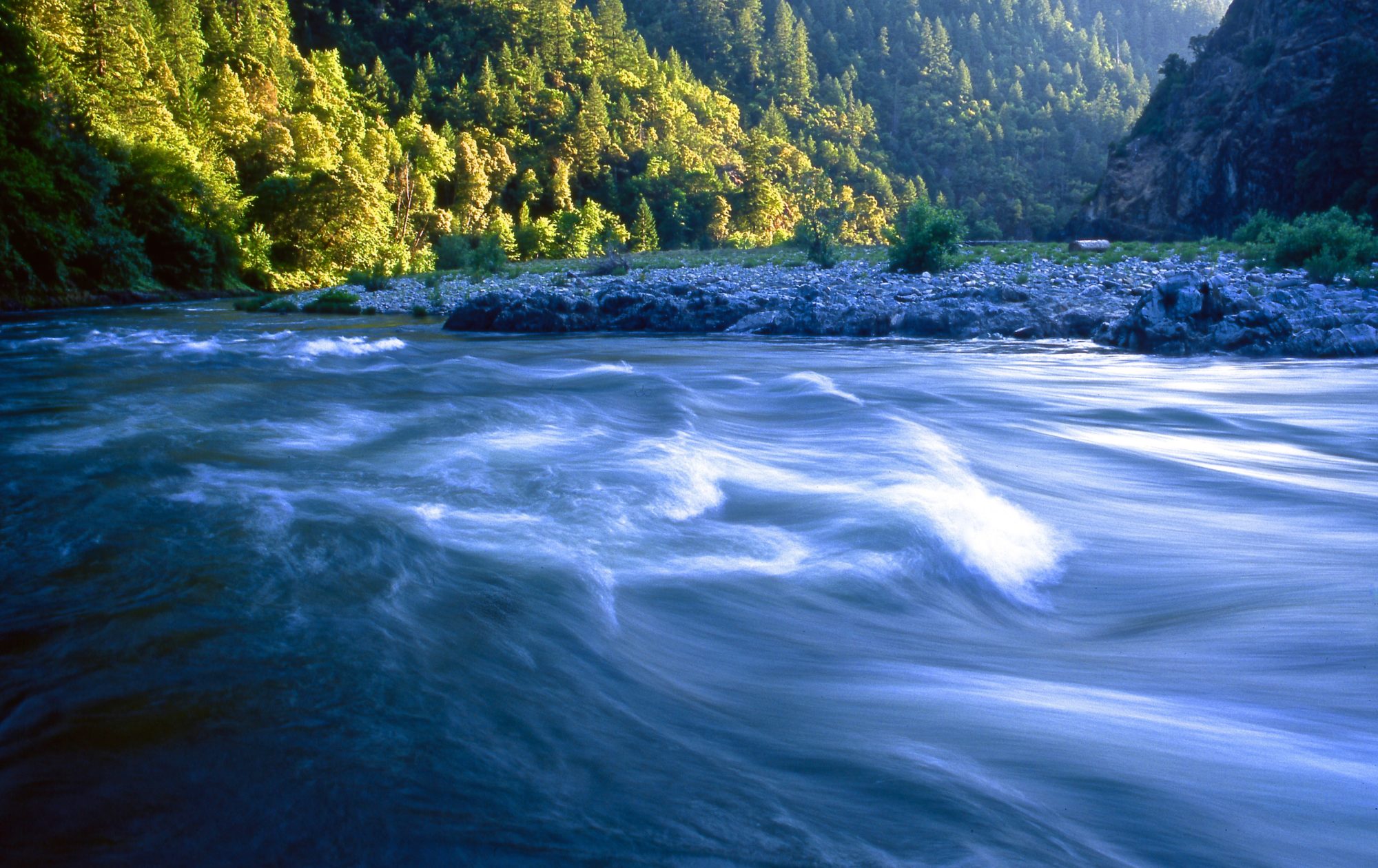Floras Lake, located southwest of Langlois, is a unique coastal water body, separated from the Pacific Ocean by a narrow barrier beach. West of Langlois, New River is an unusual coastal stream—in effect the lower portion of Floras Creek that hits the barrier beach and flows north for about 9 miles between beach and private ranch lands, forming valuable wetland habitat. These ecosystems offer significant migration and rearing habitat for Oregon Coast Coho and important sheltered habitat for migrating and wintering birds.

In late fall, coho enter New River-Floras Creek and swim up through Floras Lake and its tributaries to spawning grounds east of Highway 101. In spring, a new generation of juvenile fish (fry) use the lake to rear and fatten before swimming downstream into Floras Creek-New River to smoltify and enter the ocean. According to ODFW, Floras Lake basin offers significant habitat for coast coho.
During both fall and spring migration, the attractive habitat at Floras Lake and nearby New River bottoms serves as what birders call a “vagrant trap” – meaning that unusual, far-flung, vagrant species show up here more often than one might expect. In winter, Floras Lake is a great place to view waterfowl, including thousands of lesser and greater scaup, grebes, buffleheads, shovelers, widgeon, pintails, and Tundra swans that seek refuge in its protected waters.

Floras Lake is beloved to the local community – it’s been called the “soul of Langlois.” It has become has become a destination renowned for recreational watersports, such as kiteboarding and wind surfing. Curry County provides public access at Boice-Cope Park and a popular lakefront campground. Floras Lake is also the northern gateway for access to the Floras Lake State Natural Area, a primitive park that offers stunning views from scenic headlands (including Blacklock Point) and hiking trails through coastal forests with unusual plant communities. To the north of Floras Lake, the Bureau of Land Management’s New River Area of Critical Environmental Concern (ACEC) hosts habitat for threatened Western Snowy plovers and unique beach plants and offers excellent hiking, bird watching, nature study, and seasonal paddling opportunities. The New River can be accessed at the ACEC at the end of Croft Lake Road or from an informal trail that heads north from the Floras Lake area.
Please note that between May 15 and September 15, beaches west of New River are closed to walking above the high-water line in order to protect Western Snowy plovers that breed on the dry sand. Also, there are no dogs, no motorized vehicles, kites, drones or camping allowed in the sensitive dry-sand nesting areas.
In the 1990s, through the leadership of Ellen Waring, Kalmiopsis Audubon was centrally involved in securing protection for the New River ACEC. Kalmiopsis Audubon Society has also worked for more than 15 years to protect the Floras Lake State Natural Area and county-owned lands on the south shore of Floras Lake from misguided development schemes. Many controversial ideas have been proposed through the years, but all have proven infeasible owing to lack of public road access and other constraints, including wetlands. Proposals for development and logging have also been met with stiff opposition from the local community, which cherishes Floras Lake and its beautiful lakefront that everyone can enjoy.
Citizens long suggested that a land swap with state parks could be a win-win for the county – conserving the stunning but undevelopable lakefront while obtaining property that could be used to generate revenue. In 2015, Curry County’s Real Property Task Force, which considered all county-owned properties, recommended consideration of a land swap with state parks. In 2017, county staff held a public meeting in Langlois about the future of Floras Lake, attended by more than 150 people, where citizens voiced overwhelming public support for a conservation or recreation option for the lands. In 2017, the Curry Board of Commissioners directed staff to work towards a possible swap. Through discussions with State Parks, a proposal was put forth to swap the 90 westernmost acres of county property for state property on Highway 101. In 2018, the county and state properties were each appraised. In spring of 2019, State Parks proposed minor adjustments to make up for disparities in value, and County Commissioners voted to proceed with a swap. We are pleased to report that the swap was finalized in the winter of 2020! Kalmiopsis Audubon remains engaged to encourage continued stewardship of the Floras Lake State Natural Area.

